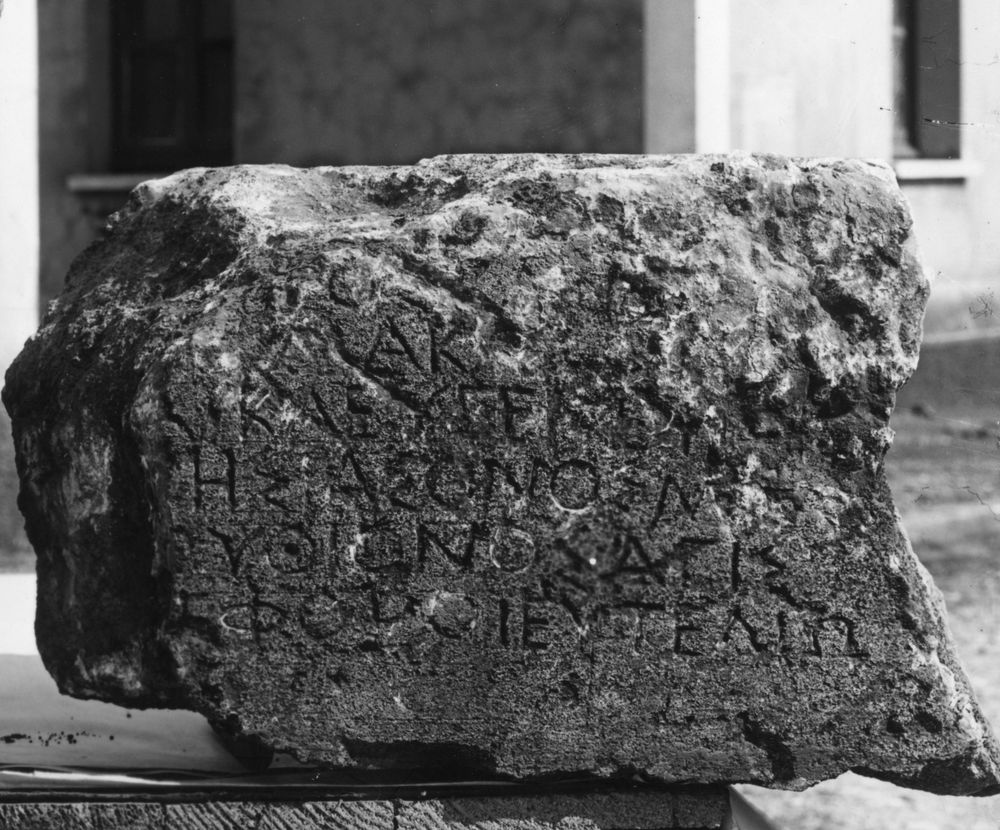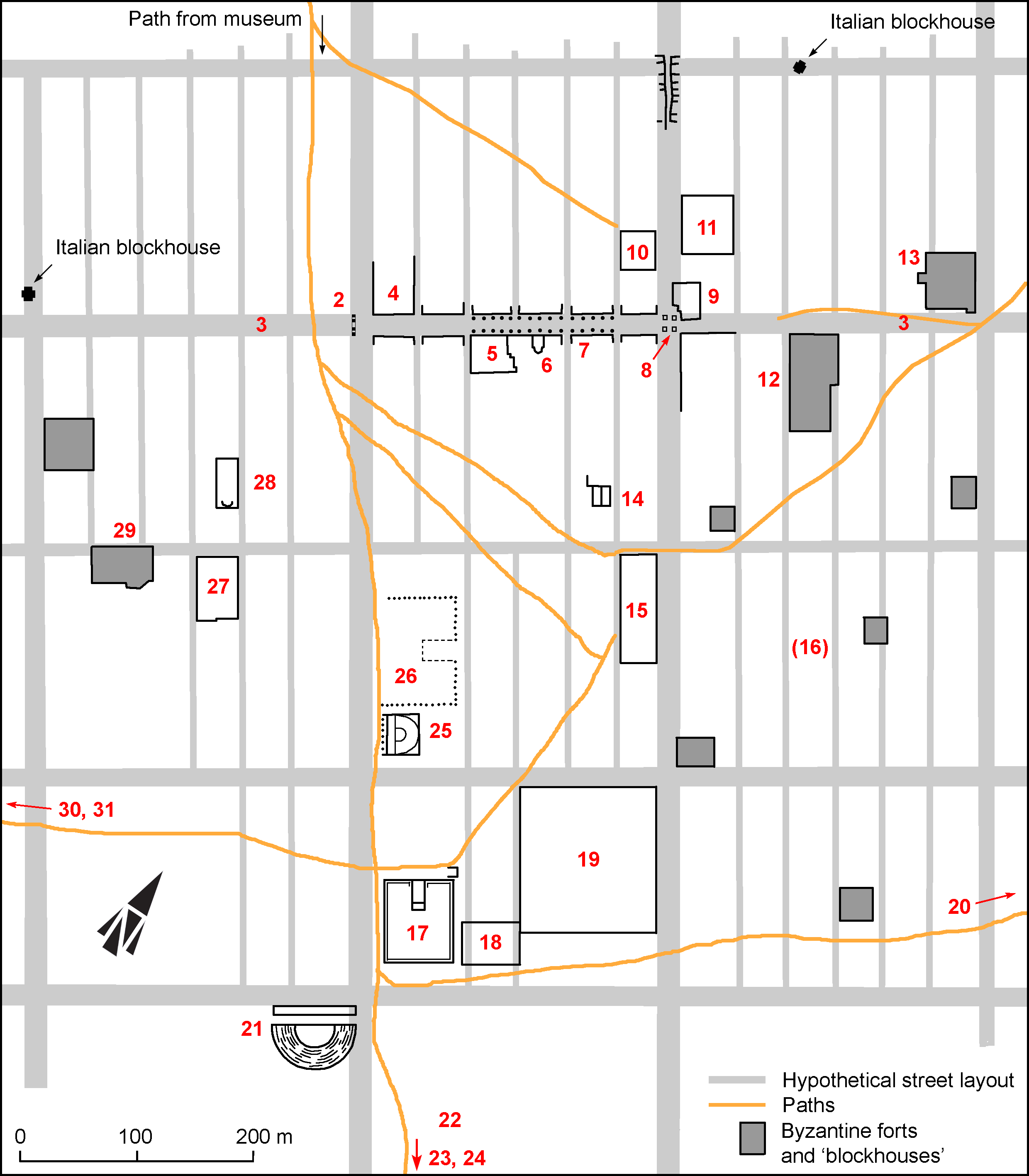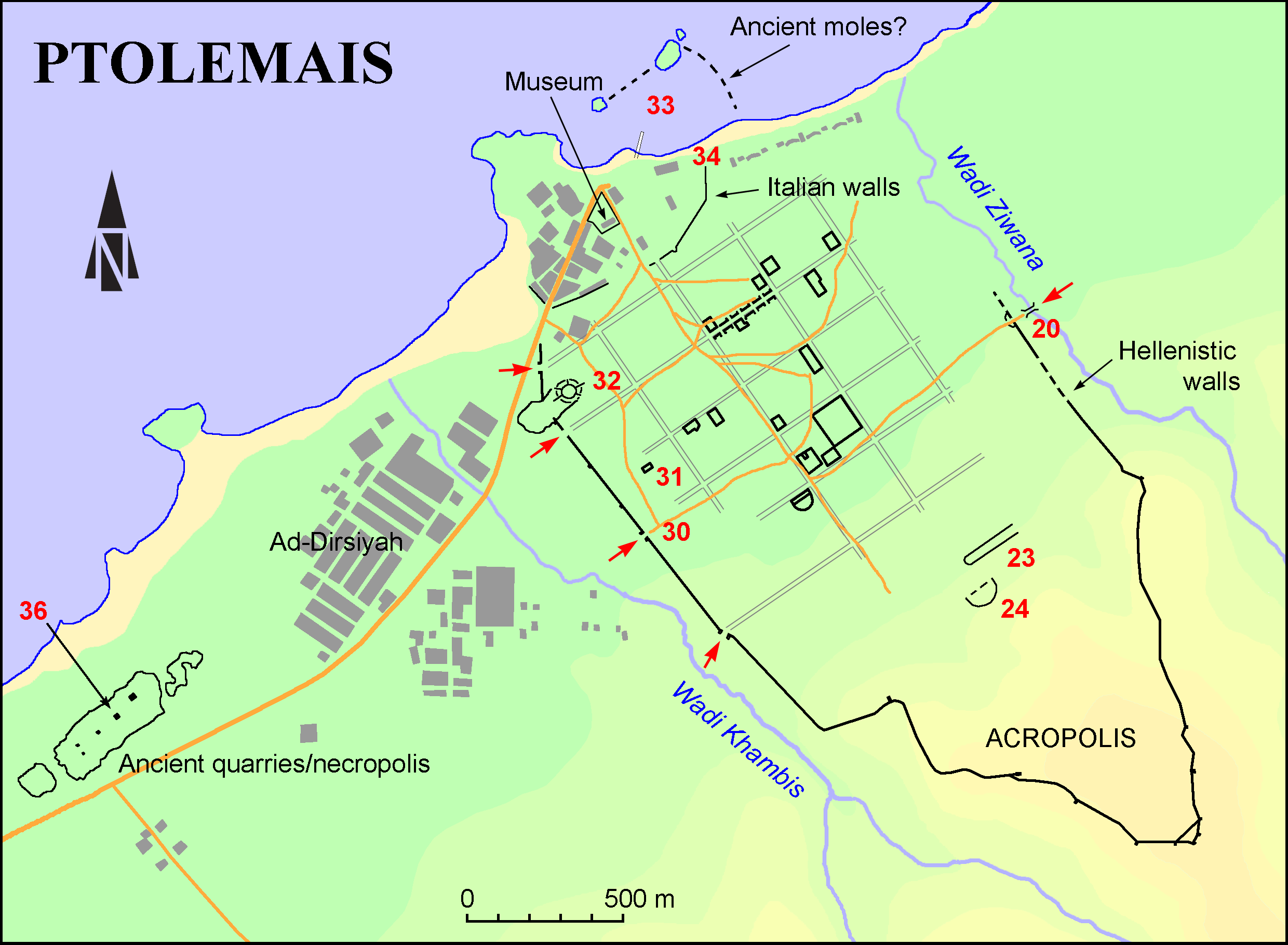EpiDoc XML:
IGCyr1358002
Trismegistos ID:
997620
Source description
Support: A block of local limestone, broken off at left, at right and below; the upper edge, although damaged, might be the original one; a vacat at the bottom of the front face might show that the right and lower edges are the original ones, only chipped off; the dimensions are unkown.
Layout: Inscribed on the front face with at least 6 lines.
Letters: height unknown; deeply cut letters without serifs; mu with oblique hastae, dissymmetrical nu, slantering sigma with short arms, upsilon with short tail and slightly curved arms.
Date: Perhaps first half of fourth century BC. (lettering).
Findspot: Found before 1930, possibly at Barka ➚ or Ptolemais ➚, exact findspot unknown.
Place of origin: Unknown.
Last recorded location: Photographed in 1930 at Al Marj: in front of the Barce Museum. copied by Etherington in 1946 at the same place.
Text constituted from: Transcription and edition from photograph (H. Berthelot).
Bibliography
Never published before IGCyr2; mentioned without image by Reynolds 1999.
Text
French translation
[---] [.. ? ..]po[.. ? .. Untel fils d'Arim]mas, Kl/Ka[.. ? .. fils d'Untel], [.. ? ..]n fils de Kleugénès, (5) [.. ? ..]ès fils de Iasôn, M[.. ? .. fils de] Strouthiôn, Hagis [fils d'Untel], éphores. Eutéliô[n? était secrétaire?].
English translation
[---] [.. ? ..]po[.. ? .. So-and-so son of Arim]mas, Kl/Ka[.. ? .. son of So-and-so], [.. ? ..]n son of Kleugenes, (5) [.. ? ..]es son of Iason, M[.. ? .. son of] Strouthion, Hagis [son of So-and-so], ephori. Eutelio[n? was secretary?].
Italian translation
[---] [.. ? ..]po[.. ? .. Il tale figlio di Arim]mas, Kl/Ka[.. ? .. figlio del tale], [.. ? ..]n figlio di Kleugenes, (5) [.. ? ..]es figlio di Iason, M[.. ? .. figlio di] Strouthion, Hagis [figlio del tale], efori. Eutelio[n? era segretario?].
Commentary
The origin and meaning of this inscription raise many questions. It is known to us only from a photograph preserved in the late J.M. Reynolds' archive and showing also IRCyr2020 M.109. She mentioned it briefly at a conference held in Paris in 1999, where she intended to trace the very few inscriptions known from ancient Barka. This photograph, known to us from the IRCyr archive, was shot in front of the ancient lapidary storeroom of Al Marj, the modern city continuing ancient Barka, which was destroyed by an earthquake in 1963; the new Al Marj al Qadim was rebuilt since, at a short distance to the West. That so-called Barce Museum had been closed some time after 1946 and the transfer of the items kept there remains obscure, as well as their link with such and such origin (see for instance IGCyr1238002). The photograph, dated 1930 and bearing number E1403 was identified by J. Reynolds in the years 1990 in the archive of the Department of Antiquities at Cyrene, where photos of the whole region were kept, as the Department in pre-war time had its head office there. She identified this stone with a copy which had been handed out to her by M.N. Tod, who received it from the British officer Etherington, on duty in Cyrenaica in 1946.
What seems sure is that the stone was kept at Al Marj between 1930 and 1946 in a storeroom where items found either at Barka, at Ptolemais or in the neighbourhood were kept. Depending of its date, this inscription might belong to Barka or to the coastal site, either when the latter was still Barka's harbour or when it was already an autonomous city, Ptolemais. There are good arguments for dating the inscription to the first half of the fourth century. During that very period, Barka lost its influence and Ptolemais took advantage. Allocating the inscription to Barka is thus only hypothetical.
The organisation of the text is no less obscure. A series of personal names, some of which partly lost, lead to restore at least seven mentions with name and father's name, but further names might have been lost. At line 2, the segment -ΠΟ- might belong to a compound in -ιππος, but necessarily at the nominative and this would lead to a different restoration with up to twelve names. This syllable appearing also at the beginning or at the middle of some names, it seems more cautious to leave it unrestored. After the names, the word ἔφοροι appears in a surprising place: in other documents from Cyrenaica, this title precedes the list of names (see IGCyr010800.822, IGCyr0638002, with discussion about their number). If really from Barka, this inscription would add this city to those where ephori are attested, namely Cyrene, Euesperides and Arsinoe-Taucheira. H. Berthelot will publish a more thorough study of this inscription.
If we admit that this list ends with the title 'ephori', what should we do with ΕΥΤΕΛΙΩ? There is no letter cut at the end of this line and below it there is a space as large as the preserved width of the block. The most evident reading would be to restore a nu at the beginning of the following line, producing the name Εὐτελίων, well attested in other regions. This would preferably be followed by a father's name or perhaps only by a mention of his office, secretary as hypothetically suggested here.
Amongst the personal names, we find a newcomer, Στρουθίων, derived from the noun στρουθός meaning both 'sparrow' and 'ostrich'. At line 2, the genitive ending -μα leads very probably to the typically Cyrenaican name Ἀρίμμας. The only other candidate from the regional stock is Λυκόμμας (IGCyr 1241002). A man named Kleugenes (son of Epinikos) is mentioned on a base from Ptolemais (IGCyr1066302); it is the only other mention of that name in Western Cyrenaica, whereas we have a series of occurrences at Cyrene. For the end of line 3, the name might begin with Κλ or Κα, both initial syllables being known for various names attested in Cyrenaica.
CC BY-NC-SA 4.0 Deed Attribution-NonCommercial-ShareAlike 4.0 International License.
All citation, reuse or distribution of this work must contain a link back to DOI: https://doi.org/10.60760/unibo/igcyrgvcyr2 and the filename (IGCyr000000 or GVCyr000), as well as the year of consultation.


